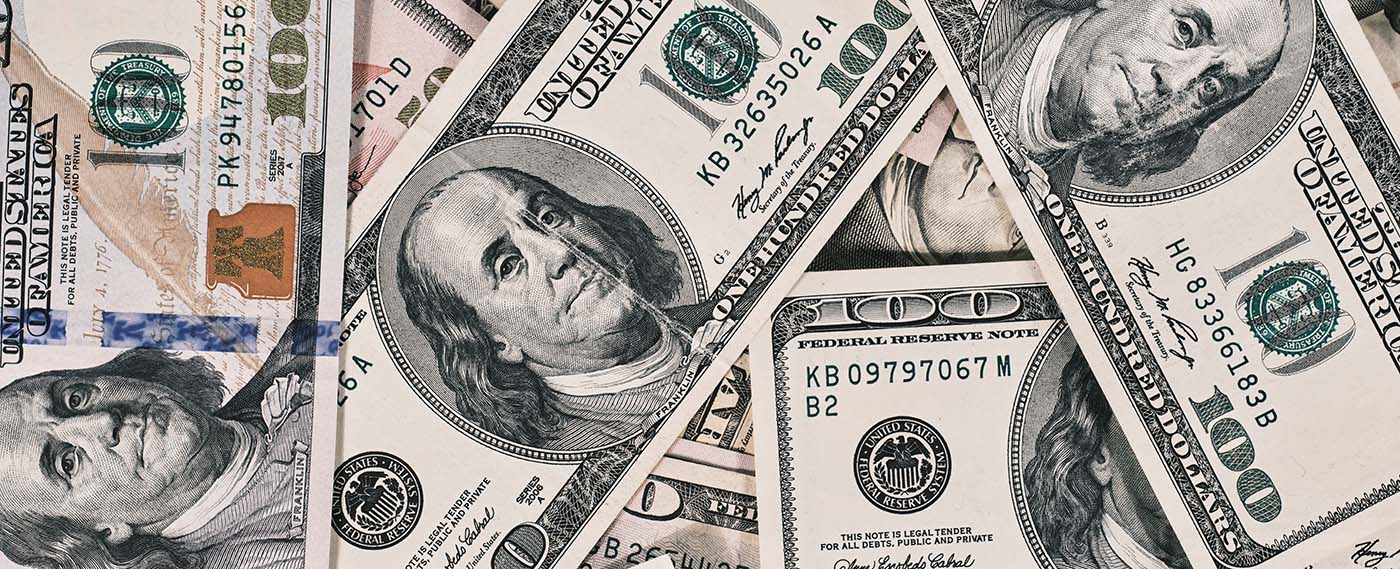

A hidden debt of 65 trillion dollars
Els ‘forwards’ i els ‘swaps’ de divises generen futures obligacions de pagament que no apareixen en els balanços ni en les estadístiques oficials de deute. Segons el Banc de Pagaments Internacionals, aquest deute ocult ascendeix a 39 bilions de dòlars en el cas dels bancs i a 26 bilions en el de les entitats no bancàries amb seu fora dels Estats Units.
Els ‘forwards’ de divises són contractes vinculants que fixen el tipus de canvi per a la compra o venda d’una divisa en una data futura, mentre que els ‘swaps’ de divises són acords entre dues parts per intercanviar pagaments d’interessos de préstecs en dues divises diferents.
Els primers serveixen de cobertura davant la volatilitat del mercat canviari. Els segons solen utilitzar-se per aconseguir finançament en moneda estrangera amb un tipus d’interès més favorable que els dels crèdits que es poden obtenir en un mercat estranger. Però ni els uns ni els altres es reflecteixen en els balanços de les empreses ni en les estadístiques oficials de deute.
Creixement exponencial
El problema és que, com adverteix el Banc de Pagaments Internacionals (BIS per les seves sigles en anglès), a mitjan 2022 els bancs de fora dels Estats Units amb accés directe al crèdit de la Reserva Federal devien uns “39 bilions de dòlars” si sumem els seus ‘forwards’ i ‘swaps’ de divises. És més del doble del deute en dòlars que consta en els seus balanços i més de deu vegades el seu capital.
En el cas de les entitats no bancàries amb seu fora dels Estats Units, l’import ascendeix a “26 bilions de dòlars”, el doble del deute en dòlars que consta en els seus balanços i 9 bilions més del que devien l’any 2016.
El volum total d’aquest deute gairebé s’ha doblat respecte a l’any 2008. Els inversors han aprofitat la relaxació monetària i uns tipus d’interès ultrabaixos per a augmentar el seu palanquejament a la recerca de majors rendiments.
Fora del balanç
Aquest mercat de divises porta implícit un enorme endeutament en dòlars que queda ocult, ja que, a diferència d’altres derivats com els acords de recompra o ‘repos’, les obligacions de pagament dels ‘forwards’ i ‘swaps’ de divises es registren fora del balanç.
Les obligacions de pagament d’aquests derivats ascendeixen a quantitats astronòmiques. Considerant totes les divises, els imports pendents a la fi de juny de 2022 van assolir els 97 bilions de dòlars, 30 bilions més que l’any 2016 i pràcticament el mateix que el PIB mundial.
Només l’abril de 2022 el volum d’operacions amb aquesta mena de derivats es va acostar als 5 bilions de dòlars diaris, segons el BIS, dos terços de la facturació diària mundial de divises.
Protagonisme aclaparador del dòlar
Com a moneda vehicular, el dòlar es troba a un costat del 88% de les posicions vives, segons dades del BIS. I és que fins i tot un banc que vulgui fer un ‘swap’ entre dues divises diferents del dòlar, recorreria a aquesta moneda com a pas intermedi.
Com destaca el BIS, “gran part d’aquest deute és a molt curt termini”, per la qual cosa “les necessitats de refinançament resultants provoquen restriccions de finançament en dòlars”. De fet, gairebé quatre cinquenes parts dels imports pendents a la fi de juny de 2022 vencien en menys d’un any.
La falta d’informació directa sobre aquests derivats dificulta a les autoritats monetàries preveure la magnitud i la geografia de les necessitats de refinançament en dòlars. Com a conseqüència, resulta més complicat restablir el flux fluid de dòlars a curt termini en el sistema financer quan és necessari, especialment en temps de crisi i quan el dòlar ha experimentat una important revaloració.
Risc sistèmic?
Com adverteix el BIS, el palanquejament ocult i el desajustament de venciments en les carteres dels fons de pensions i les companyies d’assegurances “podrien plantejar un repte polític” per garantir el flux fluid de dòlars en la pròxima gran crisi. Cal no oblidar que la demanda de dòlars augmenta en moments d’incertesa en els mercats.
A més, donada l’enorme escala d’aquest deute, un volum rellevant d’impagaments podria tenir greus efectes sistèmics.
Si vols descobrir la millor opció per protegir els teus estalvis, entra a Preciosos 11Onze. T’ajudarem a comprar al millor preu el valor refugi per excel·lència: l’or físic.
Leave a Reply
You must be logged in to post a comment.





👍
Gràcies, Manel!!!
Gràcies!
Gràcies, Joan!!!
👍
Gràcies, Jordi!!!
De tot això se ‘n deu parlar als passadissos i reservats de Davos mentres al carrer la TV pregunta si hem notat una rebaixa en el preu del pa gràcies a la supressió de l’ IVA del 4% que s’aplicava a una barra de 0,60 €.
Es pot ben dir: en quin món vivim!
Gràcies per la informació, anem aprenent tot i que no hi podem fer re. O potser sí….Diuen que no hi ha mal que cent anys duri.
Gràcies per la teva reflexió, Mercè! Continuem aprenent…